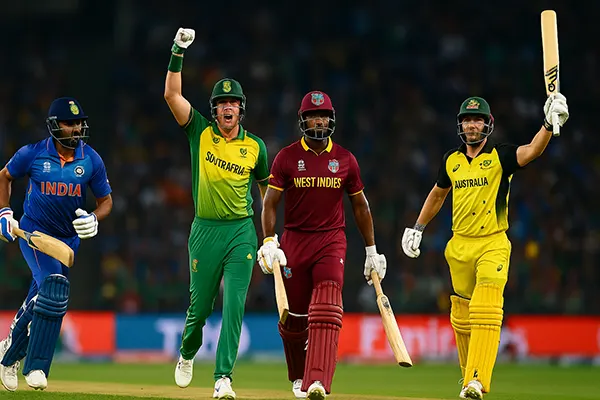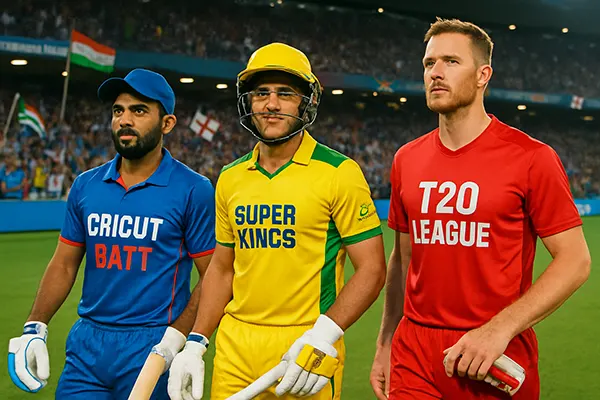
World Cricket Series: How T20 Tournaments Are Becoming a Global League
The landscape of international cricket has experienced a seismic shift in recent years, largely driven by the explosion of T20 formats. Once seen as experimental, these rapid-fire games have become the backbone of global cricket entertainment, capturing massive audiences and transforming how the sport is played and commercialised. As of February 2025, we are witnessing the emergence of a structured, interconnected ecosystem that may soon resemble a unified global league.
The Evolution of T20 into a Global Cricket Movement
Twenty20 cricket, initially launched to revitalise interest in the sport, has exceeded all expectations. With shorter match durations and dynamic gameplay, T20 matches have appealed to newer, younger demographics. Tournaments like the Indian Premier League (IPL), the Big Bash League (BBL), and the Caribbean Premier League (CPL) have set the precedent for commercial viability and media success. Their formats have become the blueprint for other countries looking to establish their own franchises.
Franchise-based leagues have spread across continents, from the SA20 in South Africa to the ILT20 in the UAE and the Major League Cricket (MLC) in the USA. These competitions do not just promote local talent but also draw international stars, making every league a global spectacle. This increased interaction among players from various nations enhances the quality and intensity of matches.
The economic impact is also significant. Revenues from sponsorships, broadcasting rights, and merchandise sales have made T20 leagues a primary financial engine for cricket boards. Investors see these events not only as sports but also as entertainment properties with enormous potential for growth and cross-border marketing.
Standardisation and Integration: Steps Toward a Unified Framework
In 2024 and early 2025, the ICC and various domestic boards have begun discussions on scheduling synchronisation and player workload management to reduce conflicts between national duties and franchise commitments. There’s a growing consensus that some level of calendar coordination is essential for the sustainability of the format.
Moreover, we now see a degree of standardisation in tournament structures. Player drafts, salary caps, and overseas player limits are being harmonised, allowing athletes and agents to plan careers more effectively. These shared systems create a more level playing field and better competitive balance across leagues.
Technology also plays a role in this integration. Innovations such as standardised DRS protocols, AI-assisted analytics, and real-time player tracking are being shared between leagues. This collaborative tech ecosystem is not only enhancing viewer experience but also improving team strategies and scouting networks worldwide.
Global Player Mobility and the Rise of Cricketing Superstars
One of the most visible signs of T20’s globalisation is the international mobility of players. Cricketers like Rashid Khan, Andre Russell, and David Warner have become household names across continents, often spending more time in franchise cricket than with national teams. Their global fan bases grow with every tournament.
In 2025, player agents are negotiating contracts that span multiple leagues, ensuring consistent income and visibility for their clients. Some athletes are even being managed like footballers, with endorsements, media rights, and personal branding becoming crucial elements of their career strategies.
This transnational movement of players enhances the cultural diversity of each league. As more players from associate nations enter the global spotlight, fans are introduced to different cricketing traditions and styles, further enriching the sport. It’s no longer about India vs. Pakistan or Australia vs. England—it’s about Delhi Capitals vs. MI Emirates or Joburg Super Kings vs. San Francisco Unicorns.
Implications for National Teams and the Traditional Format
While T20 leagues offer immense commercial and developmental advantages, their impact on international cricket is complex. National boards often struggle to secure top players for bilateral series, especially when they coincide with league schedules. The balance between country and club cricket is delicate and increasingly difficult to manage.
However, some boards have adapted by integrating T20 experience into national team selection. Players who excel in leagues are fast-tracked into national squads, giving selectors a broader and more performance-oriented talent pool. This approach has proven effective, especially in limited-overs formats.
Test and ODI cricket still hold cultural and historical value, but they must evolve to remain relevant. Shorter series, better scheduling, and strategic marketing are required to keep fans engaged. The T20 boom may force traditional formats to innovate or risk diminishing importance in the global calendar.

The Road Ahead: Can a Global League Truly Exist?
By February 2025, conversations about a centralised T20 league calendar have gained serious momentum. Proposals to introduce a ‘Champions League’ model—where top teams from different leagues face off annually—are being revisited. The idea is no longer a pipe dream but a strategic possibility being explored by broadcasters, boards, and investors alike.
For such a league to materialise, several challenges must be addressed, including governance models, profit-sharing agreements, and scheduling logistics. The ICC could play a pivotal role in coordinating these aspects, acting as a regulatory hub without undermining the autonomy of domestic leagues.
Most importantly, fan support for this idea is growing. Online forums, social media, and fan clubs frequently discuss fantasy matchups between top franchises. The appetite for a global T20 showdown is there; it’s now a matter of aligning the right stakeholders to make it happen.
Conclusion: A New Era of Global Cricket Entertainment
T20 cricket is no longer a novelty—it’s the mainstream engine of global cricket. The structural, financial, and cultural shifts observed in the last decade have laid the groundwork for a truly international cricket league. While challenges remain, the trend is clear: cricket is moving towards a club-based, globally interconnected future.
With continued investment, collaboration, and innovation, the dream of a unified global T20 league might soon become reality. As we stand at this transformative juncture, it’s clear that cricket fans around the world are in for an exhilarating ride through the sport’s next evolution.
The world is watching, and cricket is ready to answer the call—boldly, creatively, and globally.
